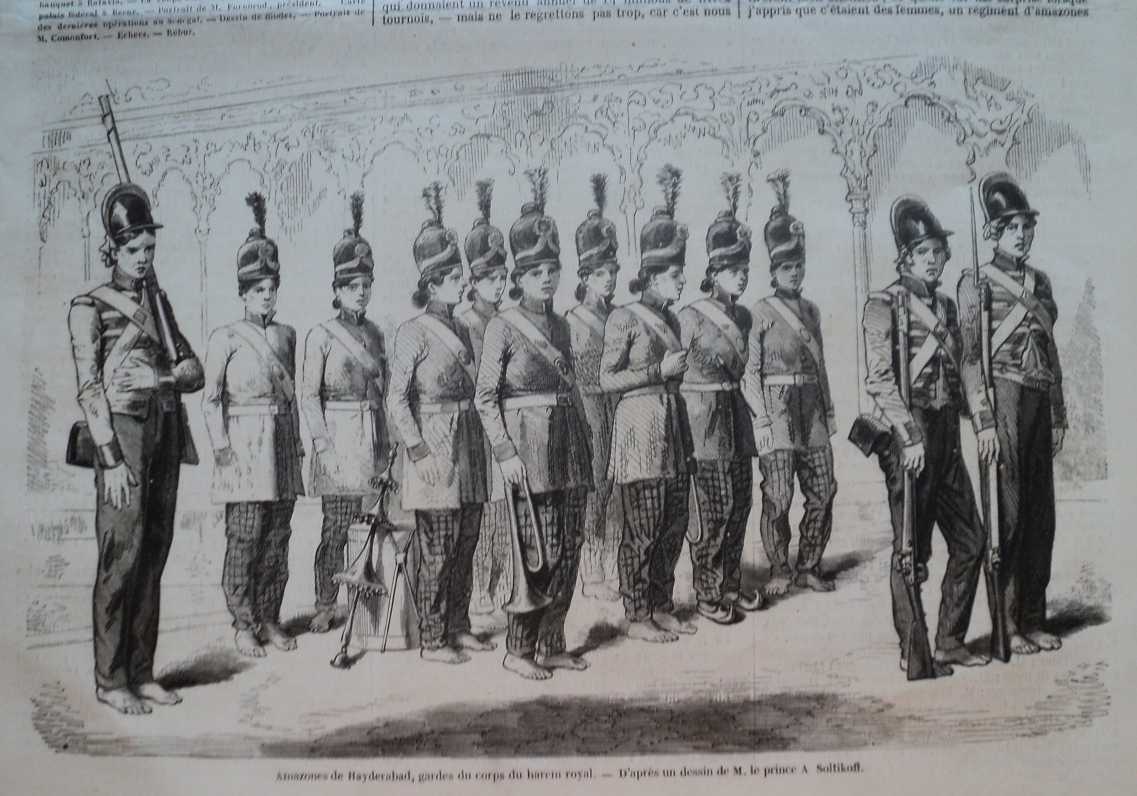

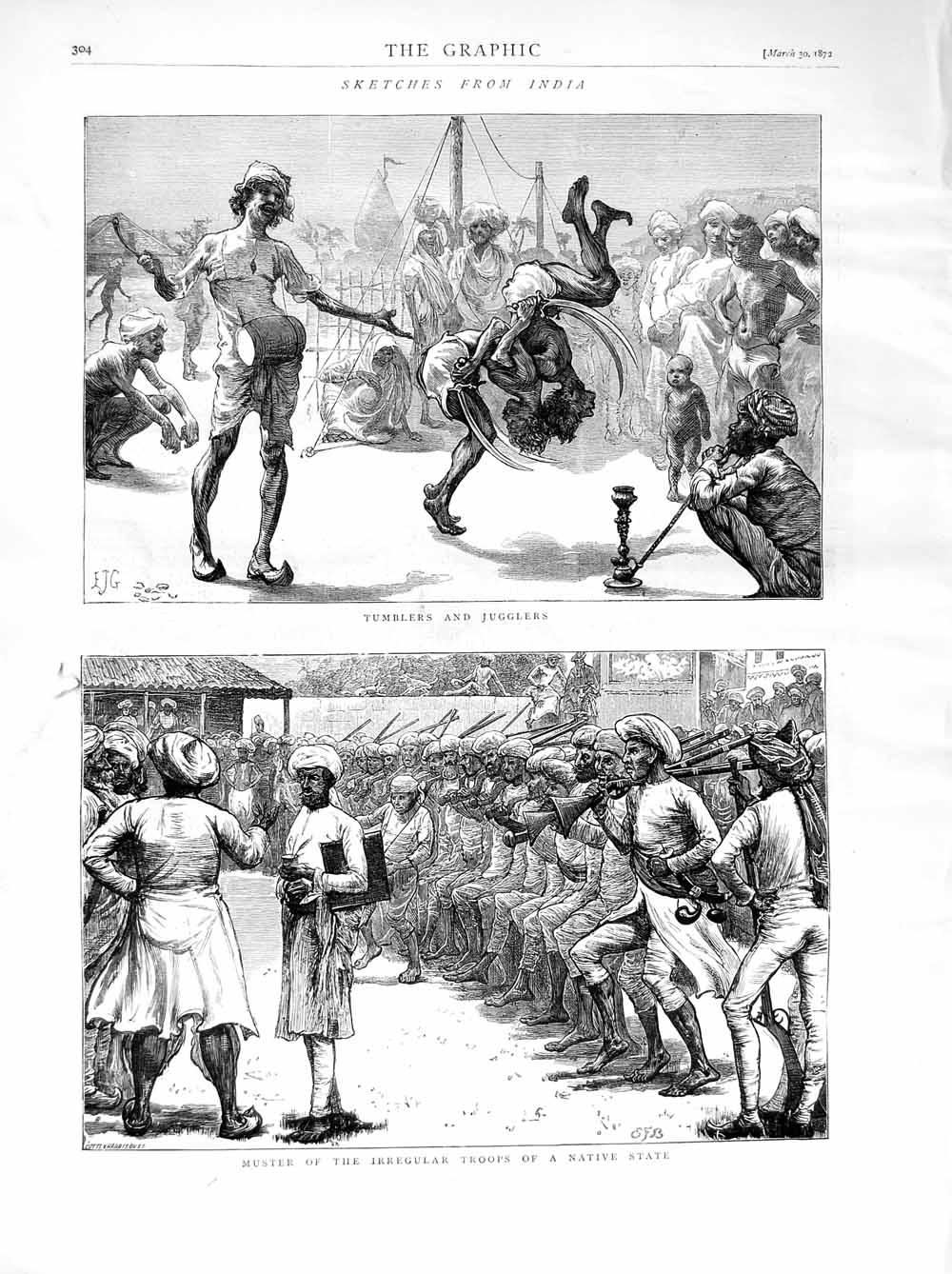
Native tumblers and jugglers-- and native irregular troops, from The Graphic, 1872
Source: ebay, Dec. 2002
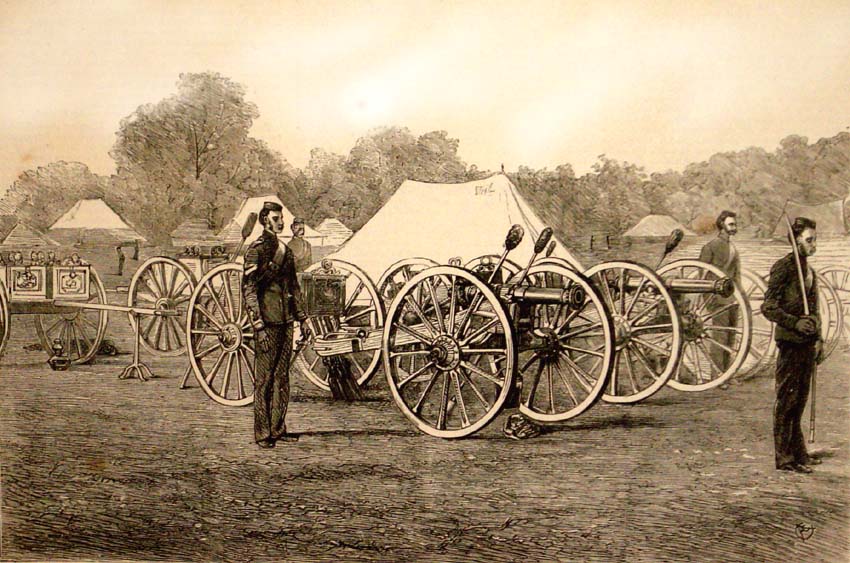
"Gold and silver guns belonging to the Guicowar of Baroda," from the Illustrated London News, 1875
Source: ebay, Oct. 2004
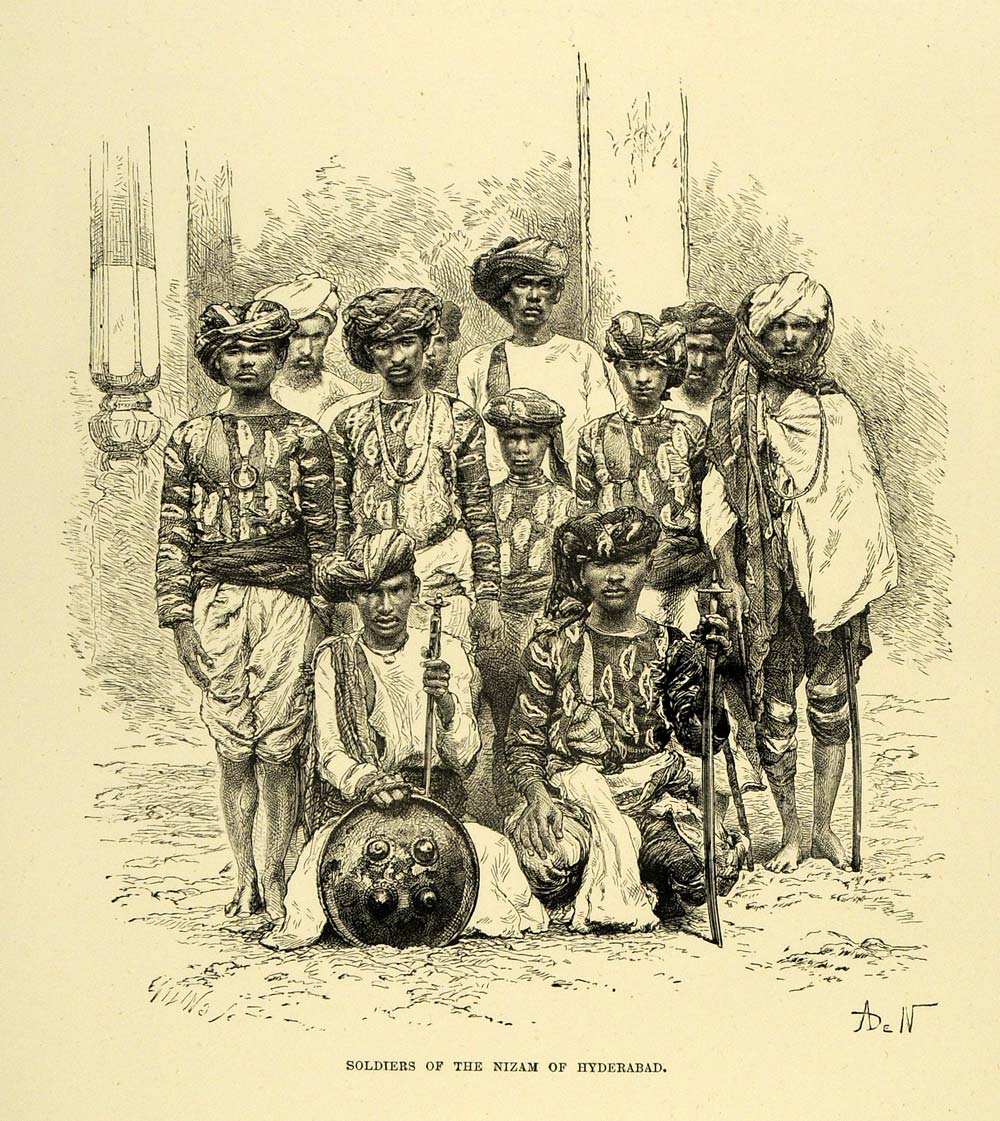
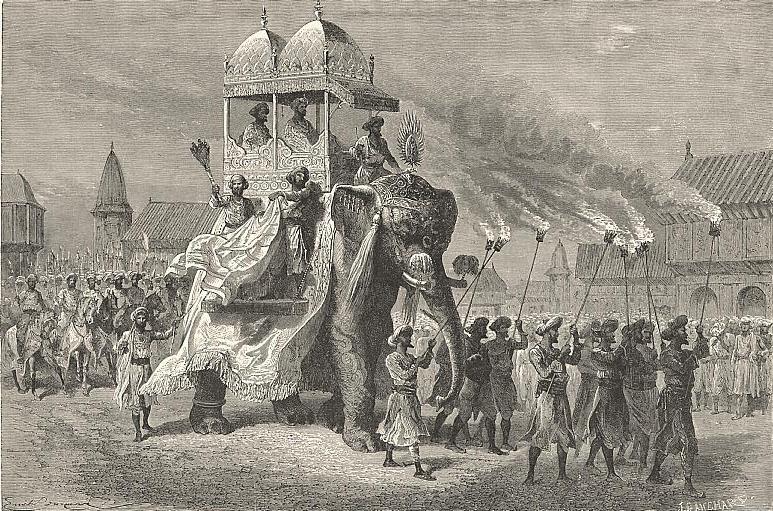
"Procession of a Mahratta Prince," a wood engraving, 1878
Source: ebay, Aug. 2001
From the original description:
"The engraving represents one of those military processions, seen frequently in the west of India, where some Mahratta prince appears before his subjects with a splendor unknown elsewhere in the world. The display commences with the native troops commanded by European officers, then the Arab corps, the squadrons of Mahratta cavalry, the field artillery, the musketeers, the cannoneers mounted on dromedaries, and many thousand troops to swell the procession to as great length as possible. Then comes the royal standard-bearer, mounted on a superb elephant printed and covered with embroidered housings; the man bears a flag of cloth of gold forty feet in length. Around him are a body of picked cavalry, specially charged with the defense of the standard. Armed with long lances and curved sabers, they are clad with extreme richness; their coats of crimson velvet, tight-fitting trousers, and pointed shoes, form as perfect a knightly costume as could be imagined.Some of them wear a light steel morion and Saracenic coat of mail; others have heavy cuirasses of buffalo-skin richly ornamented. The tips of their lances are silvered, and their bucklers of rhinoceros-skin decorated with golden bosses. After them follow an immense drum-corps, with instruments of every size and form, more agreeable to see than to hear; and then the nobility of the kingdom on prancing horses, surrounded by their servants carrying banners, and by heralds loudly proclaiming the importance of their respective masters. To them succeed the high officials of the kingdom, ministers, high-priests, and courtiers. Each one of these personages is seated upon an elephant, whose gold-fringed covering reaches to the ground. Twenty or thirty elephants, proud of their adornments, thus defile [=file by], with grave and majestic air."
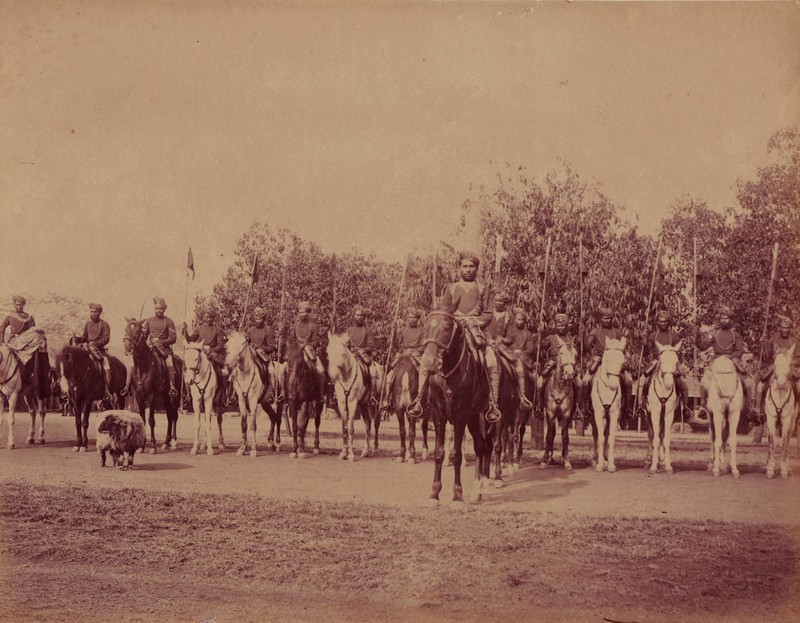
"Risala of Kolhapur," apparently accompanied by a sheep; an albumen photo, c.1880
Source: ebay, Oct. 2007
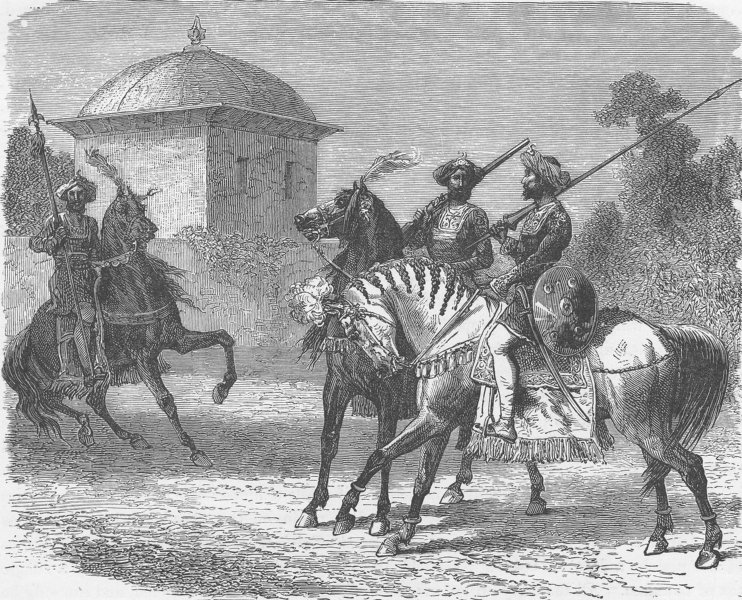

Junagarh troops on parade, from a Dutch travel book, 1896
Source: ebay, Mar. 2008
== Indian Routes index == Indian Routes sitemap == Glossary == FWP's main page ==